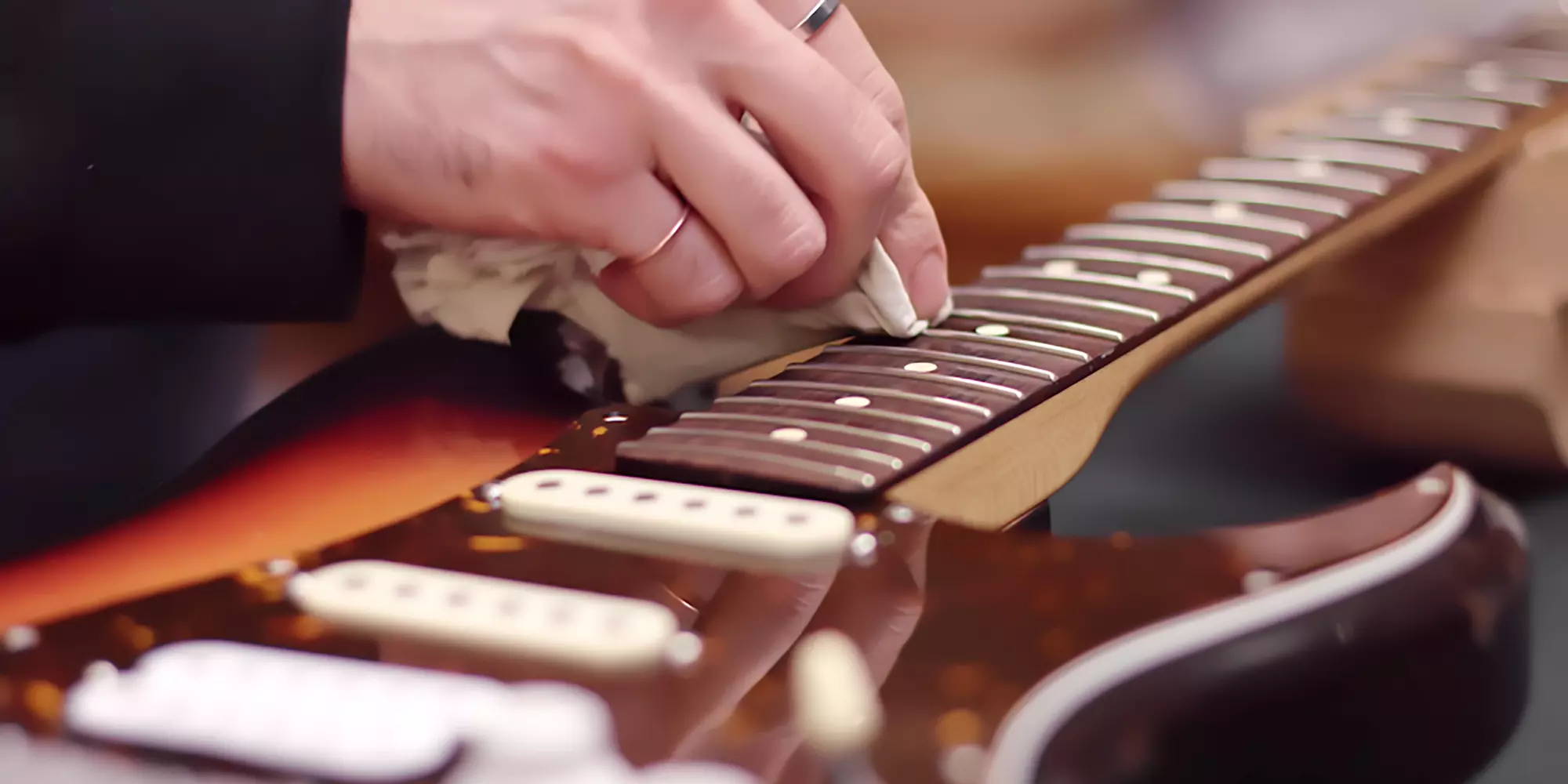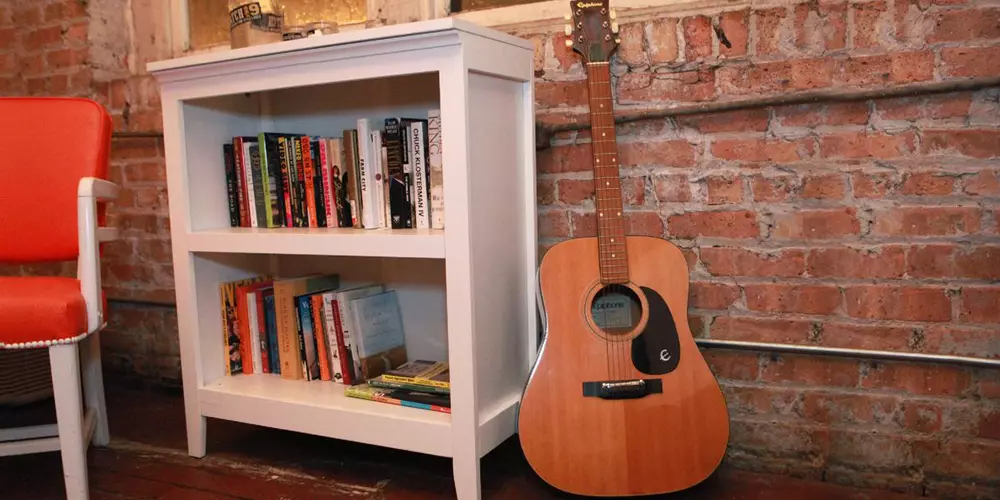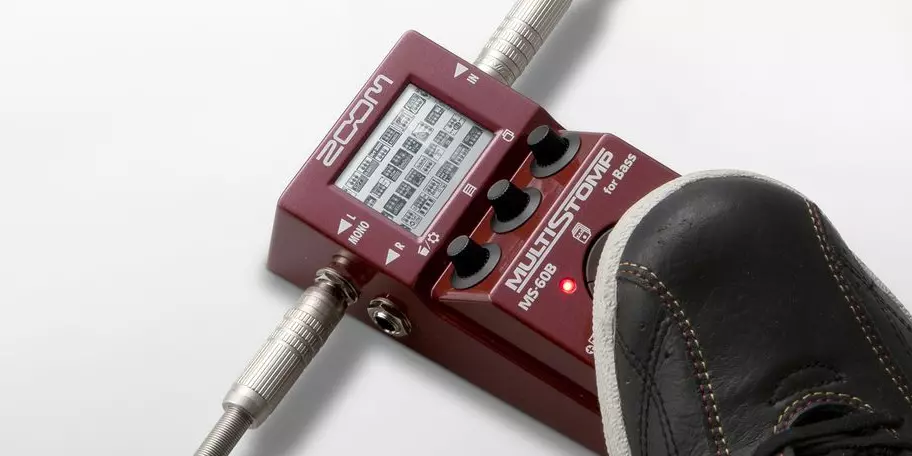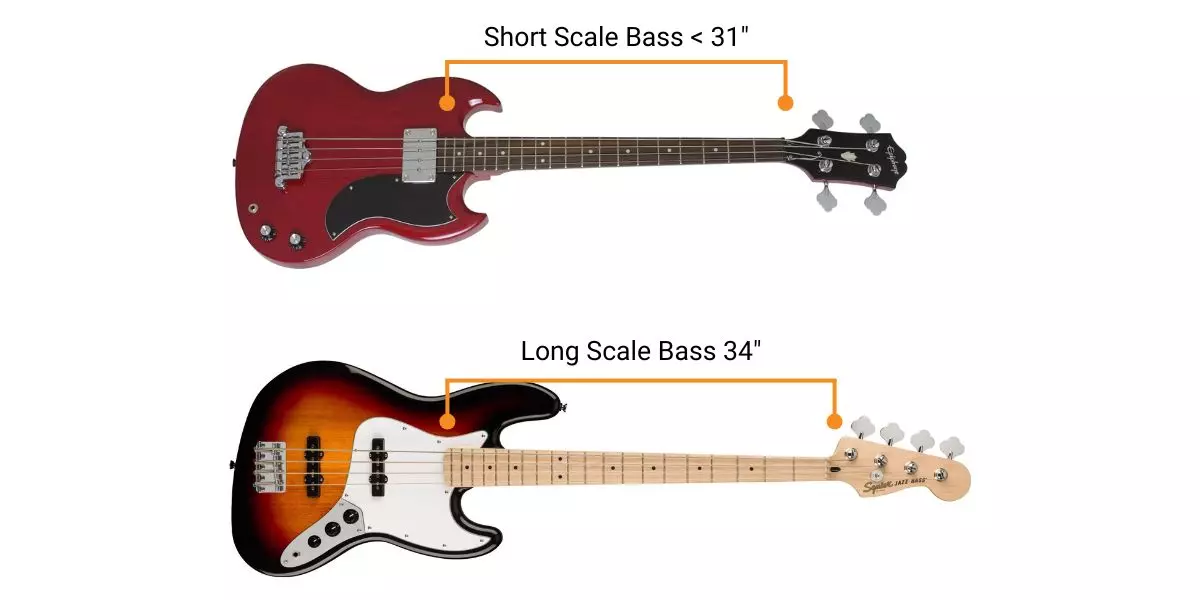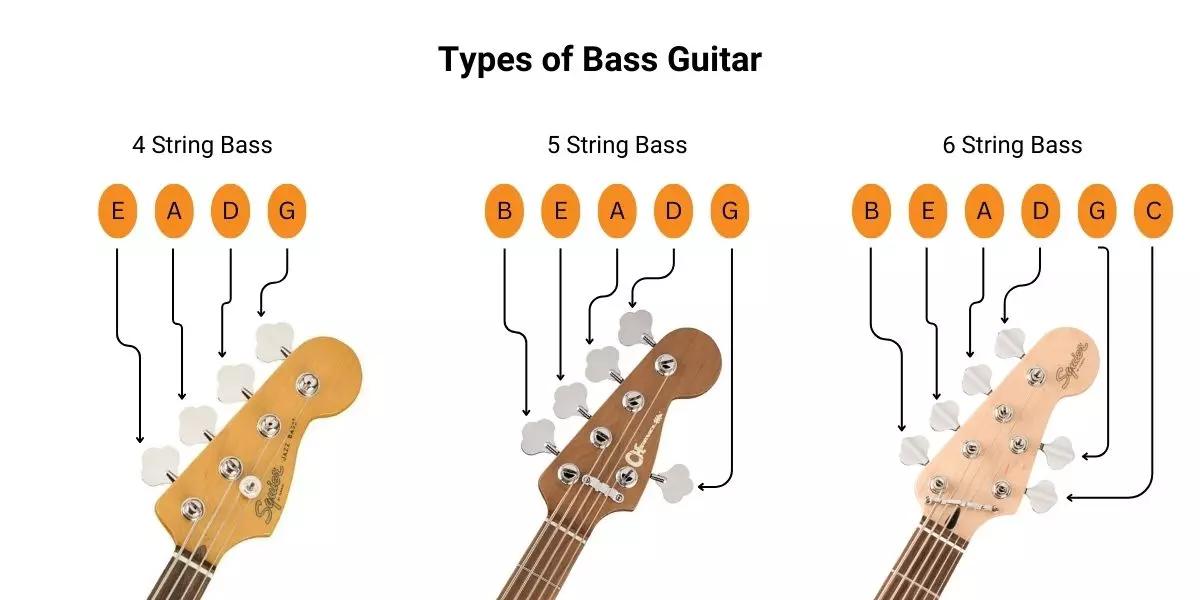Bass Guitar Basics
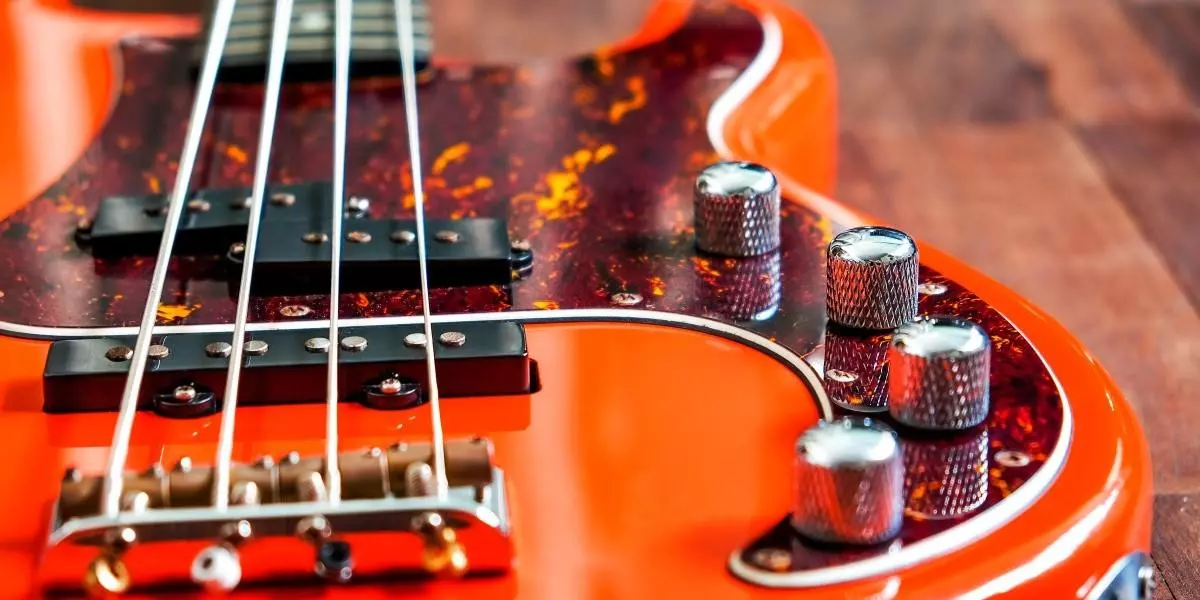
When it comes to being in a band, everyone wants to play guitar or be a singer. The bass player usually hangs out of the spotlight, holding the band together. Now, you’re looking to start a band with your buddies, and they chose you as the bass player. But you’ve never played the instrument before.
This article will explain how to choose a bass guitar, its components, and bass guitar basics you should know to become a solid bass guitar player.
Choosing a Bass Guitar Brand
How do you pick a bass guitar? This decision will depend on a couple of things. Most likely,
one of those things is how much your budget is. Most brands will have budget-friendly options and higher-end models using premium materials.
A popular brand is Fender, which offers two standard models: the Jazz and the Precision. In 1951, Leo Fender introduced the Precision Bass (also known as the P-Bass), which has a fretted neck that enables precise intonation. In 1960, Fender introduced the Jazz Bass, which has a narrower, more rounded neck and is designed for jazz players.
These two basses are the workhorses of the bass world but can be pricey. For a more affordable option, Squier basses make great budget-friendly bass guitars. The Squier J-Bass and P-Bass have the same configurations as their Fender counterparts but with less expensive components, thus making them a more reasonably priced gateway to the land of the bass.
Bass Guitar Reccomendations
Your local Long & McQuade carries a vast inventory of Bass guitars, including a Gibson Thunderbird, Ibanez SR, MusicMan Stingray or the Hofner (if you want to emulate a particular famous English left-handed bass player).
Like Fender, most of these have the twin budget-friendly option for the cash-strapped bassist. Finding a bass will not be a problem with the proper guidance.
Here are a few bass guitar options to consider:
- Fender J-Bass
- Fender P-Bass
- Squier J-Bass
- Squier P-Bass
- Gibson Thunderbird
- Epiphone Thunderbird
- Ibanez SR
- Ibanez GSR
- Ernie Ball Music Man DarkRay
- Sterling by Music Man Stingray
- Hofner Violin Bass
- Hofner Ignition Pro
Choosing a Scale Length: Long-Scale or Short-Scale?
Next, you must consider whether you need a long-scale or short-scale bass.
On a guitar, scale length is the distance between the nut (the small, narrow piece just below the headstock) and the bridge (the large metal piece on the other end of our bass). This length is typically 34” on a long-scale bass, as introduced by Leo Fender and his Precision Bass.
While this length has become the standard, another option is a short scale.
Introduced in the early 1950s, other brands began offering basses with a scale length of
less than 31”. The short-scale bass has its advantages. Its shorter scale means a shorter neck, less distance between the frets and a more compact design - which makes it perfect for players of a smaller stature.
They also make an excellent bass for those who are exploring their options. But don’t dismiss the short-scale bass as a beginner bass; after all, it worked for Bill Wyman, the bassist for the Rolling Stones!
Passive and Active Knobs
Aside from tuning, figuring out how the knobs on your bass function is vital to developing your unique sound.
Generally, there are two knobs: one for volume and one for tone. However, there can be more, depending on if it is a passive or active bass. A passive bass uses a single or dual coil pickup attached to the knobs to produce a “round” or “fat” sound. Musical genres such as rock, blues, and jazz often use this sound.
If there are more than three knobs, then it is most likely an active bass. This type of bass uses an internal battery-powered preamplifier to produce a “snappy” and “bright” sound. Metal, fusion, and slap-style funk are popular styles of music that use this type of sound.
Pickups: Single-Coil or Dual-Coil?
Another variable that will influence your sound is the type of pickup that your bass has. First, what is a pickup? It is a little electromagnetic device that “picks up” the vibrations from the strings (mechanical energy) and converts them into sound.
Your bass can have either a single-coil or dual-coil pickup.
A single-coil pickup comprises one row of magnets wrapped around a copper coil. The bass can also have two single coil pickups: one close to the neck and one closer to the bridge. Dialing in each pickup or a combination of the two, you can produce some unique sounds.
A dual-coil pickup has two single rows of magnets that can be wired in series (one coil goes into the second coil) or parallel (each coil follows its own path to the output). Both wiring options are hum-cancelling.
How does the type of pickup affect your sound? A single-coil pickup produces a snappy, bright sound, while a dual-coil will produce a warmer, fuller sound. The pickup is an important factor depending on what music you want to play.
Tuning Your Guitar
A guitar tuner is one of the most important yet often forgotten accessories to buy with your bass.
A clip-on tuner is inexpensive, portable, and easy to use. Clip the tuner to the headstock (the piece at the end of the neck) and turn the tuning pegs (the big silver knobs attached to the headstock) until each string is in tune with what you want.
In most cases, and for this article, we will keep it simple and tune your bass to standard tuning. Standard tuning is the most typical tuning for a guitar. For the bass, it is E, A, D, and G. The E string is the thickest, the next one is A, the next is D, and finally, the thinnest is G. 5-String Basses add a B string and 6-string basses add a B and E.
Guitar Tuner Recommendations
Here are some great affordable tuner options that are portable and easy to use:
Bass String Types and Which to Choose?
The type of bass guitar strings you use is strictly a personal preference; however, they do slightly change the sound produced. There are four types of bass strings to choose from:
- Roundwound
- Flatwound
- Half-round
- Tapewound
Roundwounds are the most popular and typically come standard on bass. They are wrapped in stainless steel or nickel and have a bright sound. However, they are also the hardest on your fingers and produce a squeaky noise when you run your fingers across the fretboard.
Flatwounds are smoother to the touch and produce that warm, mellow tone synonymous with the 1950s and 1960s sound. They are also easier on the frets.
Halfwounds are roundwounds with a flatter surface. As far as sound goes, they fall between roundwounds and flatwounds. Like flatwounds, they are easier on the fretboard.
Tapewounds are smoother to the touch than flatwounds. They tend to sound dark and closer to the sound of an upright bass.
Bass Strings Recommendations
Here are some string options to consider:
- Roundwound: Ernie Ball Regular Slinky Bass
- Flatwould: Ernie Ball Regular Slinky Bass
- Halfwound: D’Addario Half Rounds
- Tapewound: Fender Nylon Bass Strings
Time to Practice With Your New Bass Guitar!
This blog provides a basic introduction to the main parts of the bass guitar. Each topic can be discussed in more detail, but it should be enough to get you started on playing a bass guitar.
The next step is the exciting part: picking the bass guitar of your choice! Long & McQuade offers in-house financing to help you make flexible payments on your purchase.
Once you have your bass guitar, it’s time to practice. The best way to learn for beginners is to take bass lessons. You can search your nearest Long & McQuade online for professional bass guitar instructors. Most of all, take it slow and enjoy the process of learning to play your favourite songs, finding your playing style and jamming with your friends.
-----------
Joseph is a self-taught drummer and bass player (with some lessons), which means he does a lot of research and asks many questions. He is an Accounts Service Rep at Charlottetown Long & McQuade.


